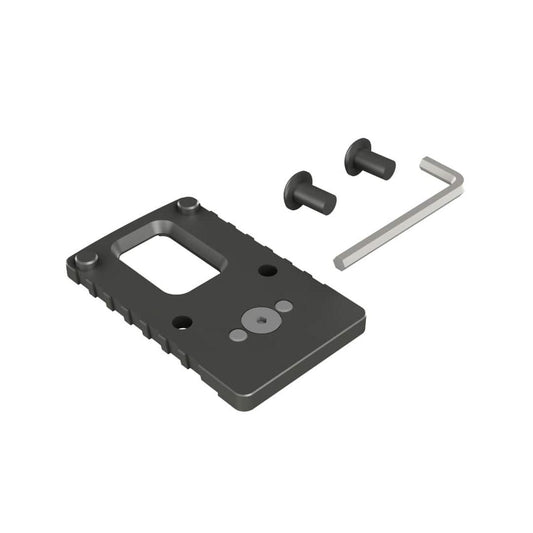

Canik Optic Base Plate (C) for Non Optic Ready Pistols Black allows for the mounting of compatible optics like the Trijicon RMR on your non-optic ready Canik firearms. Designed specifically for models such as the TP9 V2 and TP9 SA, this base plate provides a solid foundation for precision shooting. The straightforward installation process ensures you can enhance your firearm without the need for professional gunsmithing.
With this base plate, target acquisition becomes more efficient, allowing for better performance in both bright and low-light conditions. Users can expect improved accuracy whether at the shooting range or during tactical training scenarios. Equip your Canik pistol with this base plate for a versatile and effective addition to your shooting experience.
Features:
- SEAMLESS INSTALLATION ensures quick and easy attachment to your Canik pistol without the need for gunsmithing.
- SUPERIOR COMPATIBILITY with Trijicon RMR optics, giving you the flexibility to enhance your shooting precision.
- DURABLE CONSTRUCTION built from high-quality materials, ensuring longevity and resistance to wear and tear.
- LIGHTWEIGHT DESIGN minimizes added weight, maintaining the balance and handling of your firearm.
- ENHANCED VERSATILITY allows for customization with optics, perfect for tactical training and personal defense.
- OPTIC READY SOLUTION that helps you achieve accurate shooting results in various scenarios, including competitions.
- USER-FRIENDLY ADJUSTMENTS allow for easy zeroing of your optic, optimizing your shooting experience.
- FITS MULTIPLE MODELS including TP9 V2, TP9 SA, and more, providing expansive options for Canik enthusiasts.
Technical Specifications
| Feature | Details |
|---|---|
| Compatibility | TP9 V2, TP9 SA, TP9 DA, TP9 SA MOD 2, TP9 SF, TP9 SFT, TP9 SFL |
| Optic Compatibility | Trijicon RMR |
| Material | High-Quality Polymer |
| Weight | Lightweight |
| Color | Black |
What’s in the Box?
- Canik Optic Base Plate (C) for Non Optic Ready Pistols Black
- Installation screws
- User manual for guidance
Customer Reviews
“This base plate transformed my shooting experience! Easy to install and fits perfectly on my TP9.”
“I love the versatility it adds. My accuracy has definitely improved since using the RMR.”
FAQ
How do I install the Canik Optic Base Plate? The installation process is straightforward and can be done with basic tools. Simply follow the included user manual for step-by-step instructions.
Will this fit my non-optic ready Canik model? The Canik Optic Base Plate (C) for Non Optic Ready Pistols Black is compatible with various TP9 models. However, it does not fit optic-ready Caniks or specific models like the TP9 Elite Combat.
Similar Models
Looking for more ways to enhance your shooting setup? Explore our complete collection of Canik accessories to find the perfect upgrades for your firearms. Don't miss out on the opportunity to elevate your performance!
You May Also Like
Here’s some of our most similar products people are buying. Click to discover trending style.






